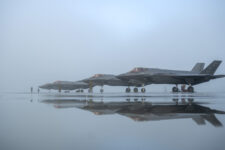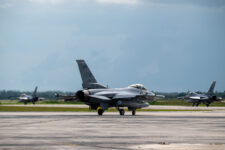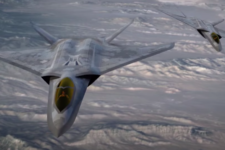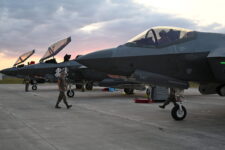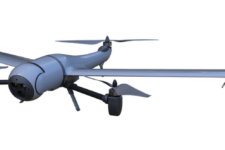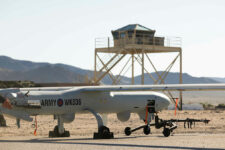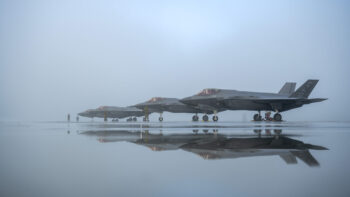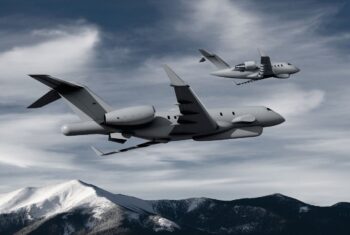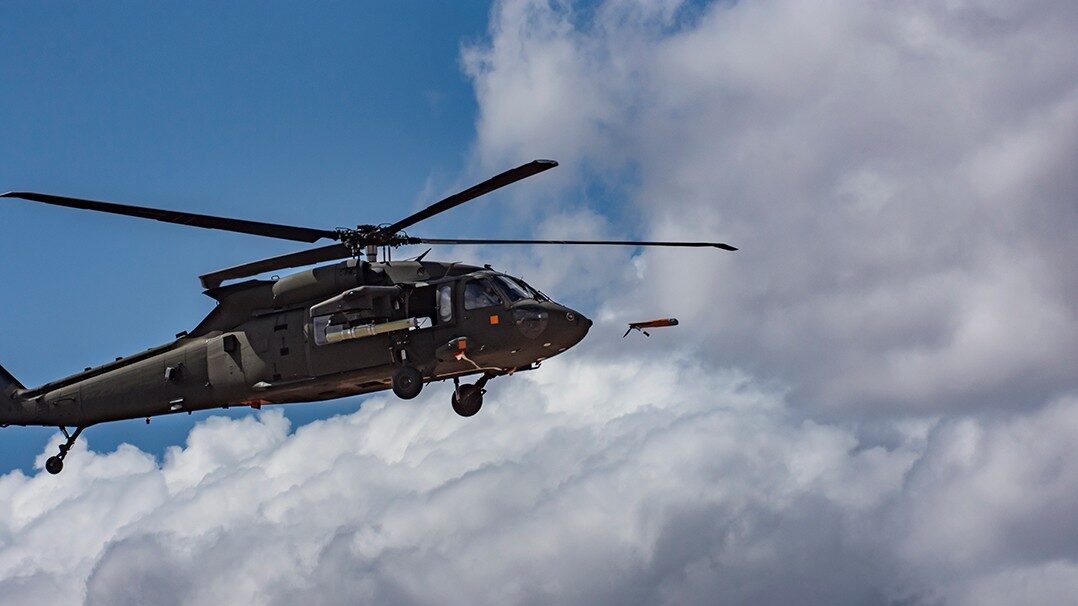
A UH-60 Black Hawk launches an ALTIUS mini-drone (aka a launched effect) during a previous event. (photo provided by Yuma Proving Ground)
WASHINGTON — This month in the sky over Yuma Proving Ground, the US Army is testing out a slew of drones in an effort to help decide just what the future force needs and pave a path towards acquiring it, according to a pair of one-star generals.
The aviation-focused Experimental Gateway Demonstration Event (EDGE) 2024 kicked off Monday and is expected to run for over two weeks. While details about exactly what tech is being tested this year remains under wraps, the event is focused on examining launched effects and unmanned aerial vehicles. Can they work together? Hold up against electronic warfare jammers?
“We really wanted to pinpoint it down to autonomy and behaviors … inside a contested environment,” Brig. Gen. Cain Baker, the director of the Army Future Command’s Future of Vertical Lift Cross Functional Team, told reporters last week.
“We’ve established, really, some battlefield geometry out there at the brigade, division, corps, against replicated threats, you know, with our live emitters, and now we’re going to ask industry to actually fly a mission set against those threats,” he later added.
In total, the service selected five companies to haul along 30 different launched effects and aerial drones into the Arizona desert for this year’s demo, according to Baker, who did not disclose just who and what made that list. Sister services will also be on hand with their own tech.
The goal, he said, is threefold: explore which capabilities worked well alone, which paired well with other weapons, and how they responded to threats.
“What we’re doing out of EDGE is really informing our next set of requirements for launched effects or UAS,” Baker said.
“The outcome of EDGE really drives our set of requirements and acquisition,” he later added.
Evolving Strategy
As the Army looks to pull demo observations into the acquisition plan, service leaders have been grappling with its aviation weapons portfolio. After moving ahead with several, possibly overlapping, categories like launched effects, loitering munitions and drones, they sought a reset or at least a chance to better nail down each category.
During a recent interview with Breaking Defense, Program Executive Officer for Aviation Brig. Gen. David Phillips said the Army Requirements Oversight Council inked an internal Abbreviated Concept Development Document earlier this summer. While he didn’t detail all the changes in the document, he revealed that the service is officially moving forward with the hunt for a short-range launched effect, studying lethal payloads for the medium-range option, and in a holding pattern for a long-range precision munition.
When it comes to those launched effects — essentially small drones that shoot out of something else mid-flight to collect info or strike targets — the service is eyeing three ranges: short, medium and long. It initially opted to focus work on that middle option, but is now officially moving forward with development of a shorter-range variant.
“That’s executing in parallel,” Phillips said.
As for the medium-range weapon, the service formed a partnership between a handful of companies. Anduril Industries is providing the air vehicle (the Altius 700); Collins Aerospace, the mission system; Aurora Flight Sciences is the integrator; and two other undisclosed companies working on payloads.
The change, here, according to Phillips, is that his shop is now working with the Program Executive Office for Missiles and Space to move forward to find the right lethality capability for that medium-range option.
“From our perspective on the launch effect capability … [it] is maturing rapidly, so to bring a warhead lethality capability on to that, would be a feasible approach, and so they’re working on that,” he explained.
The pursuit for a longer-range launched effect is still down the road, according to Phillips, but Baker explained that the Marine Corps is bringing out a similar “lethal” capability to EDGE for the Army to try out and explore connectivity questions, like how far out it can fly.
What isn’t clear is the fate of a helicopter-launched, long-range precision munition (LRPM). The service wants a longer-range weapon to fire off its AH-64 Apache helicopters and is buying and fielding the Spike Non-Line-Of-Sight missile system (NLOS) — made by Lockheed Martin and Israel’s Rafael — as the interim solution. However, it was planning to acquire a long-term solution and hosted a “shoot-off” with three vendors in 2022.
An Army Requirements Oversight Council had been slated to meet earlier this year to discuss the way ahead but that was postponed and possibly folded into that larger Abbreviated Concept Development Document decision point, in part because the service reclassified LRPM as a launched effect.
Phillps didn’t disclose just how LRPM work now fits into the launched effect roadmap but said more decisions will be forthcoming.
“There’s more to be determined based on technological maturity assessments, all those capabilities and discussions from a requirements perspective,” Phillips said.
Pentagon awards Lockheed $11.8 billion undefinitized F-35 production contract
The Pentagon aims to finalize the contract for production lot 18 by the spring, though a similar award for lot 19 is not planned to follow until the fiscal 2025 budget is approved, according to the F-35 Joint Program Office.
